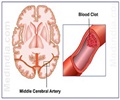Symptoms And Signs
The classic digestive system manifestation of polyarteritis nodosa is “intestinal angina.” Symptoms of PAN depend on location and severity of arteritis, and the extent of damage caused by decrease in blood supply.
Symptoms of Polyarteritis Nodosa depend on location and severity of the inflammation, and the extent of damage caused by the lack of blood supply. The tissues supplied by the affected blood vessels suffer damage.
The patient often has the following features
- Fever
- Fatigue
- Night sweats
- Loss of appetite
- Weight loss
- Generalized weakness
Myalgia, i.e. muscle pain and arthralgia (joint pain) also occur.
These nonspecific symptoms occur in the early phase of PAN. Within weeks or months, signs of vasculitis walk in. PAN may also present with the following skin lesions
- Livedo reticularis: a lace-like purplish discoloration
- Subcutaneous nodules: small lumps under the skin
- Ulcers
- Digital gangrene: death of tissues in fingers and toes due to loss of blood supply
The classic digestive system manifestation of polyarteritis nodosa is “intestinal angina,” i.e. severe abdominal pain following meals. Diseases of the gall bladder and appendix also occur in association with PAN.
Involvement of kidney can lead to hypertension. Heart attack or congestive heart failure may arise due to damage to the heart. Polyarteritis nodosa usually spares the lungs. The reason for this is not known.
Involvement of the nervous system may cause headache and seizures. The patient may die due to stroke or bleeding in the brain. Damage to nerves result in the condition called asymmetric peripheral neuropathy
Genital organ involvement manifests as pain and tenderness in testes.






